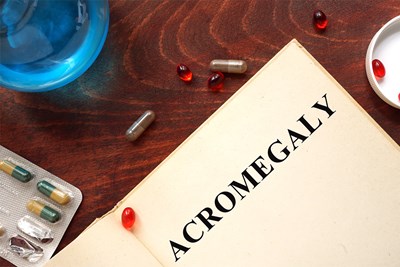Acromegaly is a hormonal disorder that is caused by the pituitary gland in the brain producing too much growth hormone. This condition mostly affects middle-aged adults and is marked by abnormally large hands, feet, and facial features.
This disorder is usually caused by a noncancerous tumor. The tumor could be located in the pituitary gland, causing it to produce more growth hormones, or it could be a non-pituitary tumor located somewhere else in the body, producing growth hormones on its own.
Either way, early diagnosis is very important for this condition, because treatment is crucial in order to prevent serious complications from occurring. Here is a look at some of the most common treatment options for acromegaly.
Surgery
Surgery is usually the recommended route of treatment if your acromegaly symptoms are being caused by a tumor. The surgery that is typically used to remove a pituitary tumor is called a transsphenoidal surgery. This procedure requires your surgeon to work through your nose to extract the tumor.
Removing the tumor will usually normalize the growth hormone production as well as eliminate the pressure on the tissues surrounding the pituitary glands. However, depending on the size and exact location of the tumor, your surgeon may not be able to remove the entire thing. If this is the case, you may still have elevated growth hormone levels after surgery and require other types of treatments.
Medications
Some of the medications that could be used to help block the action of growth hormones or lower their production include:
-
Somatostatin analogues: Sandostatin (octreotide) and Somatuline Depot (lanreotide) are both drugs that act as synthetic versions of the brain hormone somatostatin. This type of medication works by interfering with the pituitary gland’s excessive secretion of growth hormones and therefore lower the overall levels of growth hormones in your body. These medications are given as injections and are administered by a healthcare professional once per month.
-
Dopamine agonists: This type of medication includes drugs such as cabergoline and Parlodel (bromocriptine), which are are taken orally in pill form. These medications work to lower the levels of growth hormones and may even help to shrink the tumor. However, there is a risk that you could develop a compulsive behavior, such as gambling, as a side effect.
-
Growth hormone antagonist: This type of medication works to block the effect of growth hormones on the tissues in your body. One example is Somavert, or pegvisomant, which is given as an injection each day. This medication is usually only used as treatment for someone once they have tried everything else.
Radiation
Your doctor may also recommend that you undergo radiation therapy in conjunction with surgery to remove the tumor. If there are any tumor cells that remain after the surgery, radiation can be used to kill them. It can also be useful for gradually lowering the levels of growth hormones, though it may take several years for radiation alone to noticeably improve your symptoms.
There are two different types of radiation:
-
Conventional radiation therapy: This type of radiation therapy is given every weekday for four to six weeks. It may take ten years or more for you to be able to notice the full effect of the radiation.
-
Stereotactic radiosurgery: This type of radiation is also known as Gamma Knife radiosurgery and involves delivering a high dose of radiation to the tumor cells in a single dose in order to limit the amount of radiation that touches the surrounding tissues. This type of radiation can take three to five years to restore growth hormones to their normal levels.




